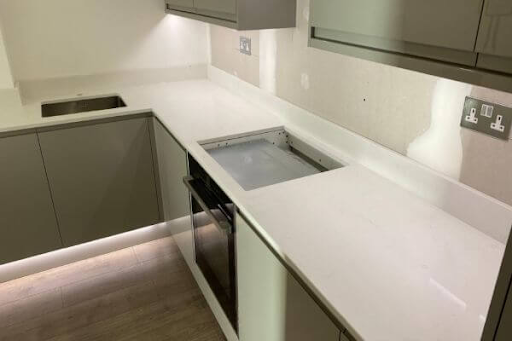
Stones of Italy
Sammy Chris
Episode 1: Italian Marbles
Marbles are stones of nature and it makes sense to call them natural stones. Science defines them as crystallized forms of limestones, found naturally in the crust of our earth.
Enormous amounts of heat and pressure act on limestone and this results in the formation of Marbles. We also need to realize that not all marble is made equal. The qualities vary according to the natural conditions of the area it is located. Where the limestones get mixed up with lots of impurities, they end up becoming weak and brittle and when the natural conditions are good, their quality is of a class.
Here is something interesting to know about what some people think of marbles. Their misconception is that marble is too weak and chips away too easily. The fact is that there are thousands of marble sculptures standing for many thousands of years outwitting natural calamities.
We have many sites of heritage and monuments that reveal good marbles that have survived to this day, being good students to the tests of time.

(Leaning Tower of Pisa, made of white marble from Carrara)
Origin of Marbles
Understanding the origin of marbles has a close relation to their quality. This is where the lookout for Italian marble begins. Italy has one of the highest quality Marble deposits in the world. Simply, they are genuine pieces of stones.
When you travel towards the northernmost tip of modern-day Tuscany, Italy, you reach the city of Carrara in the province of Massacre and of Lunigiana. The quarry here and the outcome is world-renowned.
The Carrara marbles have been used since the time of Ancient Rome and at that time, it was called the ‘Luni Marble’. The families named Cybo and Malaspina that ruled over Massacre and Carrara monitored the quarries and they created the “Office of Marble” in 1564. This regulated the Marble Mining
Industry. The Basilica of Massa was built entirely of Carrara Marbles and the Duel Palace of Massa are showcases of precious Italian stones.
Italian Marbles are for those who prefer to own the best of their kind. The common perception is that Italian stones are expensive because they are symbols of prestige. The underlying part in the prestige symbol is that they possess premium quality in their stone, texture and veins. That is why Italian marbles cost more than their counterparts. They are just one of the finest natural stones that money can buy.

( Italian Sculptures)
The Quarries
The Apuan Alps above Carrara show evidence of at least 650 quarry sites. The quarries have produced more marble than any other place on earth.
The prize yield from Carrara has been ‘Statuario’ pure white marble, throughout the millennia. The quarries continue to ship up to a million tons a year, mostly for exports.
Bianco Carrara classified into variations, as well as Bianco Venetino and Statuarietto are, by far the most common types with more exotic variations:
· Calacatta Gold
· Calacatta Borgnine
· Calacatta Macchiato Vecchia
· Arabescato Cerraiole
· Arabescato Vagli

(Carrara marble quarries. Carrara, Tuscany, Italy.)
Stone Working Heritage of Italy
They were the first to streamline and perfect quarrying methods that have been used till today. They have set very high standards of quality control and work with precision. Italians are still considered the most skilled cutters and Carvers in the stone world today.
A slab of Carrara Marble can cost up to $400 per square meter.
The market as a whole is worth over $1.1 billion. Marble extraction in Carrara is done with a 5 mm diamond wire or with big chainsaws. China, the U.S., and Germany are the top 3 buyers of marbles from Italy.
Piet rasa ra is the City of Marbles’ that stands out among the Coastal towns of western Tuscany, Italy. This town has a continuous flow of artists for sculptural works. Nearly 200 tons of marble sculptures are made annually.
All these significances apart on the commercial side marble brings in rich appearance to house floors, walls, kitchen, rooms and bathrooms with its beautiful color, special lusters and strains.
They are highly durable, Italian Marble is known for its fine veins and its Lustrous Sheen. The Italian White, The Blue-Grey from Carrara, The Pearly shades of Botticino, The Creamy white Pavonazzetto, The Red Verona varieties Cater to the expensive requirements of. The plush impact of these marbles gives a posh look.
Why is the cost high for an Authentic Italian Marble?
Newmarket research has reported that the marble market in 2020 is estimated at $13 billion and is projected to reach $16 billion by 2025.
Against this Italy’s own share is a whopping $4 billion every year. It exports to some 150 countries in the world. The success is due to “ Italian Know – How” in stone processing and manufacturing technologies. It is also at par with innovation and design. The main event for the marble world happens in Verona, Italy, the “MARMOMACC” international trade fair, an exhibition for marble blocks and slabs.
Everything is still to be invented; marble offers incredible exploratory possibilities. The deeper you dig; the more you find- in every possible way.


